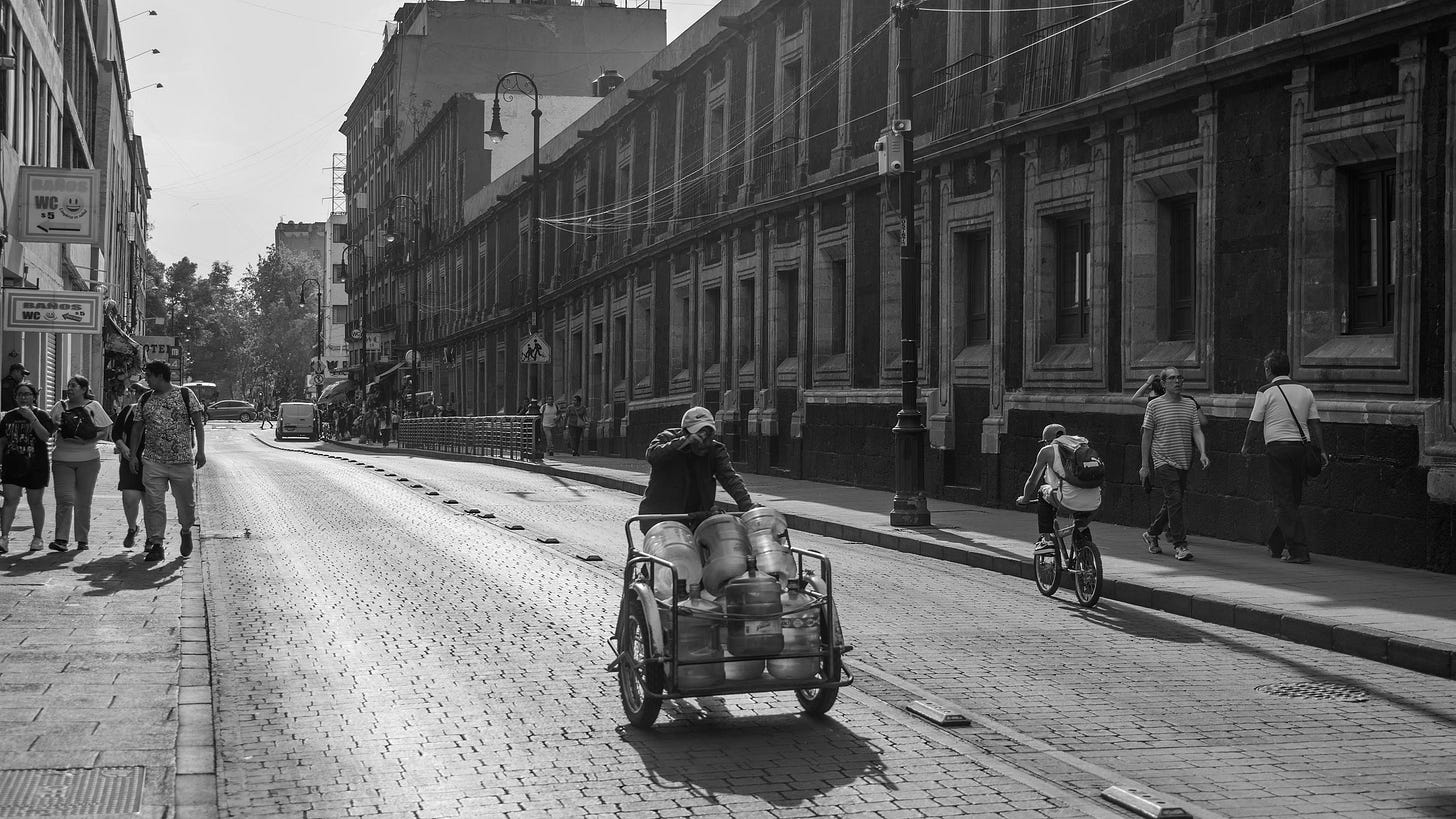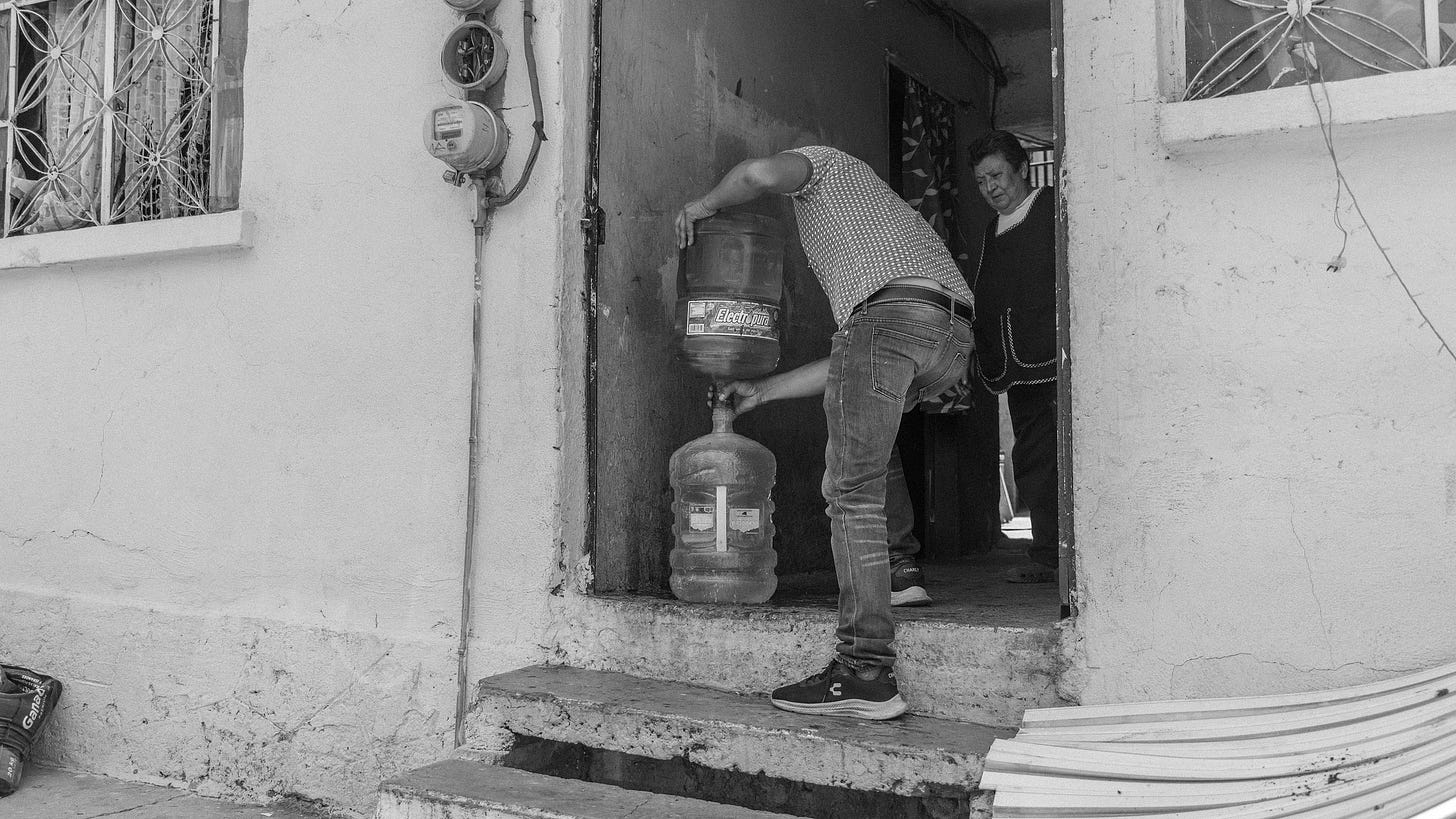A thirst for photojournalism that can change the world
“The Last Drops of Mexico City,” a Long Lead and Magnum Photos collaboration, explores a drinking water crisis in one of the world’s largest cities — and the global challenge it could foreshadow.

The best photojournalism isn’t something you just look at. The most powerful images immediately become a part of you.
One photo, in particular, haunts me. The image shows a U.S. National Guardsman in a gas mask, pointing his grenade launcher inside a car full of civilians amid a sea of protesters. Panic and terror leapt out of that scene and into photojournalist Raymond Depardon’s camera that day at the 1968 Democratic National Convention. The image is one of more than 200 that Long Lead selected to be included in The People vs. Rubber Bullets, an award-winning visual explainer outlining the endemic misuse of these weapons. Not surprisingly, the snapshot is a Magnum photo.
You don’t forget Magnum photos once you see them; Magnum photographers’ documentary-style, story-driven images instantly imprint themselves on viewers. Visually stunning, their images use light, composition, and framing masterfully to capture timeless moments of social and political impact that endure eras and find new relevancy as the world continues to turn. That’s why, after publishing The People vs. Rubber Bullets, Long Lead started talking with Magnum Photos, the world’s leading photography collective, to team up on a new approach to visual journalism. Today we’re excited to launch our first collaborative photo feature, The Last Drops of Mexico City.

In this visual essay, Magnum photographer Jérôme Sessini documents the Mexican capital’s diminished drinking water supply, fixing his lens on the people impacted most by this arid new reality. Bolstered by reporting from Rodrigo Cervantes, a former Mexico City bureau chief for NPR member station KJZZ, Sessini captures lakes dried up, reservoirs drained low, and taps running dry, as the people who relied on them suffer from ingesting water that’s not fit for consumption. It’s a sharp examination of a complex, longstanding problem rooted in a number of exacerbating factors, from climate change and over-development to pollution and chaotic population growth. But also, it’s not just about Mexico City; Sessini and Cervantes’ reporting zooms in on local challenges while acknowledging the global stakes of what a drinking water crisis of this kind could mean for other mega cities across the globe.
The photo feature is a result of years — if not decades — of work by Sessini and Cervantes. “As someone born and raised in Mexico City, I grew up aware of the problems that the city has faced for decades, sometimes centuries,” says Cervantes, in an interview with Parker Molloy in tomorrow’s issue of Depth Perception. “Water shortages is one of them, but the experience as bureau chief allowed me to get a closer look at the issue, particularly as the citizens’ concerns started to grow with global warming and overpopulation.”
Sessini, a prolific conflict photographer, brought a different perspective to examining the city’s plight. “Everyone speaks about climate issues, but sometimes it’s something very abstract,” he tells Molloy. “I used this topic to make it concrete, so people can understand and identify themselves with the problem.”
Magnum Photos, seeking more immersive ways to tell visual stories, brought the idea of this water crisis feature to Long Lead. “Partnerships and trusted collaborations between independent organizations is what will empower journalism in these challenging times,” says Giulietta Palumbo, Magnum’s editorial director. “Working together, Magnum Photos and Long Lead will produce pieces that help readers keep their eyes on the most pertinent issues of the day and navigate the social, economic, and political landscape with sharp and critical judgement.”
Long Lead and Magnum Photos, starting with The Last Drops of Mexico City, aim to reinvent impact-driven photo essays for the digital era. It’s an ambitious effort, but with bold photojournalists and advancements in computing, coding, and display technologies — not to mention camera and image capturing tech — there’s so much potential for visual reporting to make a dent (or fix existing ones) in the world. Sessini and Cervantes’ work is just the first taste of what’s to come this year from Long Lead.
So long for now,
John Patrick Pullen
Founding Editor, Long Lead






